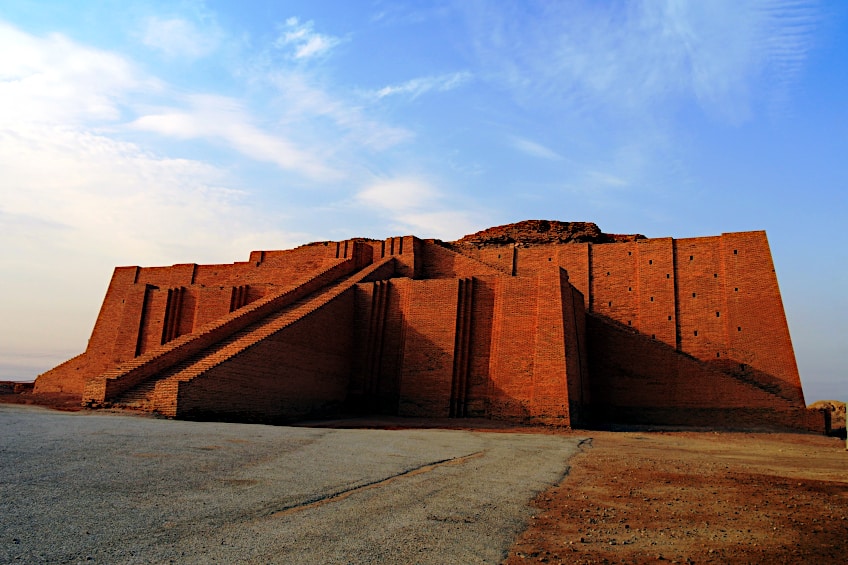Ziggurat of Ur – Great Stepped Pyramid of the Moon-God Nanna
Ziggurats are one of those ancient structures that many feel they know, but they aren’t certain. This article will look at ziggurat buildings in general, but will mostly focus on a Sumerian ziggurat known as the Ziggurat of Ur. Along the way, we’ll answer a few questions, such as “what are ziggurat buildings?”, “what were ziggurats made of?”, and “who built the Ziggurat of Ur?”. These ancient structures hardly stand as they once did, but they are worth learning about, so keep reading if you want to learn about ziggurat buildings and, more specifically, the Ziggurat of Ur.
A Look at the Ziggurat of Ur
| Architect | Ur-Nammu (roughly 2112 – 2094 BCE) |
| Date Constructed | 21st century BCE |
| Function | Religious and administrative site |
| Location | Dhi Qar Province, Iraq |
The Ziggurat of Ur is a structure that no longer stands as it once did. At the height of the Neo-Sumerian era, the Ziggurat of Ur stood as a powerful symbol of the Third Dynasty of Ur, but that has changed in the modern day. This particular ziggurat building is one that is truly ancient because it was built in the 21st century. This may make you think that it’s quite a recent thing then, and that’s why it would probably be best to say that it was from the 21st century BCE rather than the 21st century CE. The original structure is from over 4000 years ago.
The Ziggurat of Ur is a truly ancient monument that currently exists in a near utterly ruined state. The original structure is nearly entirely gone, but not through some grand war or anything of that kind, but from centuries of neglect. No matter how powerful a structure was constructed, if it goes unattended for long enough, the natural world will reclaim it. Nature has all the time in the world, time that we do not possess.
Today, the Ziggurat of Ur is a ruin. It was reconstructed, to some degree, at two different periods. Once in antiquity, over two thousand years ago, and the other less than forty years ago. That latest reconstruction was only partial and only occurred because this ancient Sumerian ziggurat happens to be located in modern-day Iraq, in the Dhi Qar Province to be exact. It was partially reconstructed because of its historical importance, and it was reconstructed under the orders of the Iraqi despot Saddam Hussain.

If you want to keep learning more about this ancient Sumerian building known as the Ziggurat of Ur, then keep reading. We’ll answer some of those questions you may have about this ancient ruin that, while it has hardly survived through the eternal annals of time, is still an impressive structure despite having fallen to near ruin so long ago.
What Are Ziggurat Buildings?
Before we discuss the Ziggurat of Ur itself, it would be best to look at what ziggurats are in the first place. These ancient structures could be found in many ancient kingdoms throughout the Middle East, such as Akkad, Aram, Assyria, Babylonia, and Sumer. These places, broadly, correspond to much of modern Iraq and Iran. Many ziggurat buildings can be found throughout these modern countries.

These kingdoms and empires in the Middle East formed the basis of Mesopotamia, one of the oldest known civilizations in the human world. This civilization has since long passed into antiquity and ruin, but many of the things they built have managed to survive in some manner throughout the millennia.
The ziggurats that have survived are simply one spectacular architectural feature of this ancient world.
The ziggurats were built as places of religious significance, but also as administrative structures that aided the running of a city or area. The general structure and architecture of these ziggurats are broadly similar to the pyramids. They are four-sided, pyramidal structures that rise to the gods above. They were not coated in clay to smooth them out as the Egyptians did with their pyramids, and they were instead made of intentionally large levels that rose upwards in a pyramidal shape while retaining some level of use, in a similar sense to the floor of a modern building.
The ziggurat’s levels were used for religious services, but also as a means of establishing administrative oversight of a region. However, one of the most important features of ziggurat buildings in general is that the highest level is reserved for only the most important people and priests. The highest level was dedicated to the gods themselves. The gods would reside at the highest point closest to the heavens.
Now, it is worth noting that these structures are actually older than the pyramids in Egypt. The oldest ziggurats outdated the Egyptian pyramids by about 680 years. This does make sense seeing as the actual pyramids used a more intricate overall design for these buildings. The ziggurats may have actually served as an inspiration to their far more famous cousins in Egypt.

Another important thing to note is that we do not know the full significance of the ziggurats in the first place. We know that they were places of some importance and that there were many varieties of them, but their exact functions have been lost to time. However, we do know that a number of them survive aside from the Ziggurat of Ur, such as the Chogha Zanbil ziggurat in Khūzestān and the Ziggurat of Aqar Quf close to Baghdad, but today we will be mostly looking at the Ziggurat of Ur. But first, let us ask what the ziggurats were made of in the first place.
What Were Ziggurats Made Of?
The ziggurats came from a far older time, long before the invention of construction advancements like concrete or modern bricks. Instead, the ziggurats, just like the Ziggurat of Ur, were made of mud bricks. These bricks were usually stacked around an inner mud core. The bricks were sunbaked and used mud to seal them in place. However, mud is not the best construction material when the rain decides to fall from the sky.
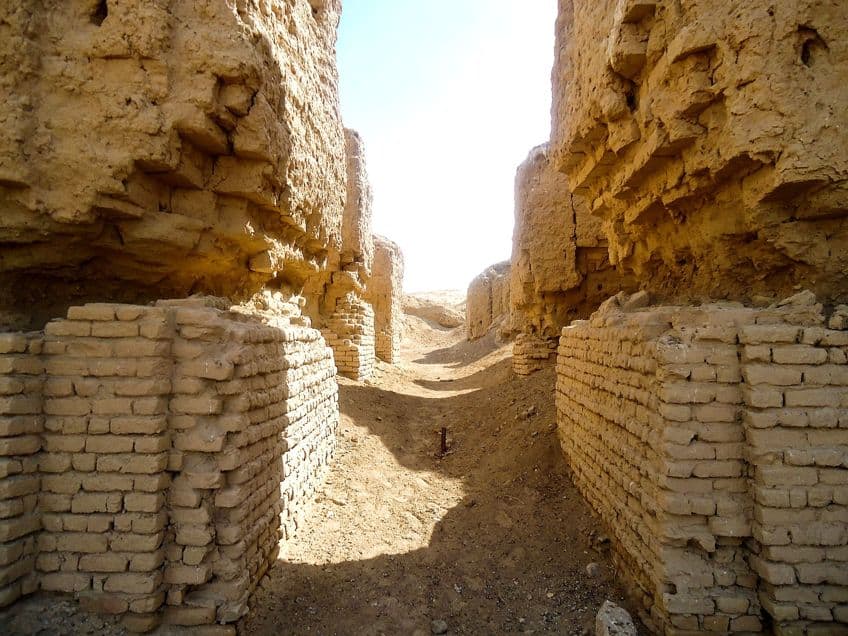
Fortunately, mudbrick is an ideal material for the region where ziggurats were built. Ancient Mesopotamia was a predominantly arid region where rain was not quite as common as it may have been in more tropical climates. So, a mud structure would simply last longer there than it would in a place like the Amazon rainforest.
To compensate for this occasional rain issue, ziggurats generally needed to be designed with some kind of a contingency plan in place. The Ziggurat of Ur was built with holes bored into the side of the structure. This allowed for the evaporation of water from the core to stop said core from turning back into wet mud.
Furthermore, there were drains built to stop the accumulation of rainwater in the first place, and, quite obviously, the ziggurat buildings were constructed with the use of a general slanted structure that would allow rainwater to flow directly off the building. This is a simple solution to an issue that could very easily cause a building like this to collapse otherwise.
Who Built the Ziggurat of Ur?
At last, we come more specifically to the Ziggurat of Ur. This Sumerian ziggurat was first built under the order of King Ur-Nammu. As has been mentioned before, construction began in the 21st century BCE, but this king never saw the end of the construction of his ziggurat. Instead, it had to be finished by his son, King Shulgi. This Sumerian ziggurat was built in honor of the moon god who went by several names. This moon god was known as Nanna, Suen, or Sīn. This moon deity was definitely a major deity, but we do not know for certain where he ranked in the Mesopotamian pantheon of gods.
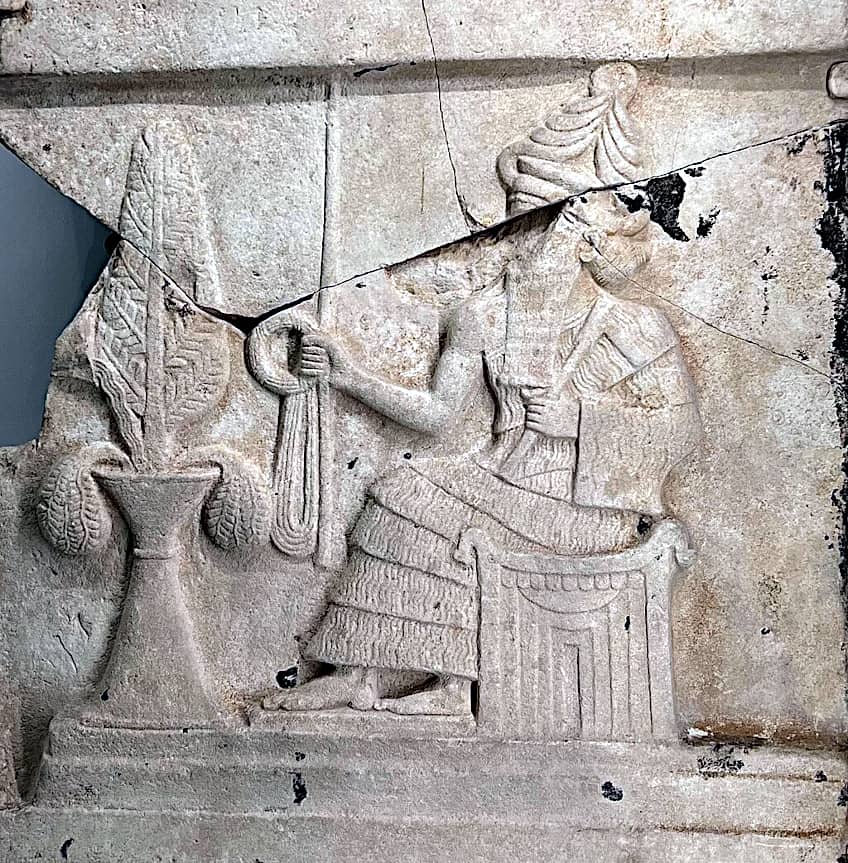
These two kings, using the Mesopotamian knowledge of lunar and solar cycles, ensured that the Ziggurat of Ur was constructed as a compass of sorts with a staircase that rose towards the sunrise of the summer solstice. This indicates that Sumerian ziggurats of this kind were built with a specific purpose as clear astronomical and geographical knowledge is inherent in the design.
Lastly, it’s worth knowing that the Ziggurat of Ur was definitely 64 m (or 210 ft) in length and 45 m (or 148 ft) in width, but the height is a different story. It is theorized that the Ziggurat of Ur was once 30 m (or 98 ft) in height, but as the highest platforms of this Sumerian ziggurat no longer exist, we cannot know for certain. This speculation is based on the size of the foundations alone. Either way, a lot of history moved through this ancient structure, so let’s have a look at that history.
Ziggurat of Ur History
The Ziggurat of Ur is a Sumerian ziggurat that was built during the Bronze Age. It was specifically constructed under the order of King Ur-Nammu during the 21st century BCE. Sadly, he never lived to see the structure completed as his son, King Shulgi, completed it after his father’s death.
This Sumerian ziggurat was built as part of a temple complex dedicated to the patron deity of Ur, but it was more than only a religious site. The Ziggurat of Ur was also the administrative center of that city. At the very top of the structure, there was a chamber dedicated to the moon god Nanna (his other names are discussed in the previous section).
This city would become the center of an empire after Shulgi claimed that he was a god to gain the allegiance of other cities. He used his new authority to control these other cities and, because of its central place in this empire, Ur would become a major capital. This also meant that the Ziggurat of Ur would become an even more important structure in ancient Mesopotamia.
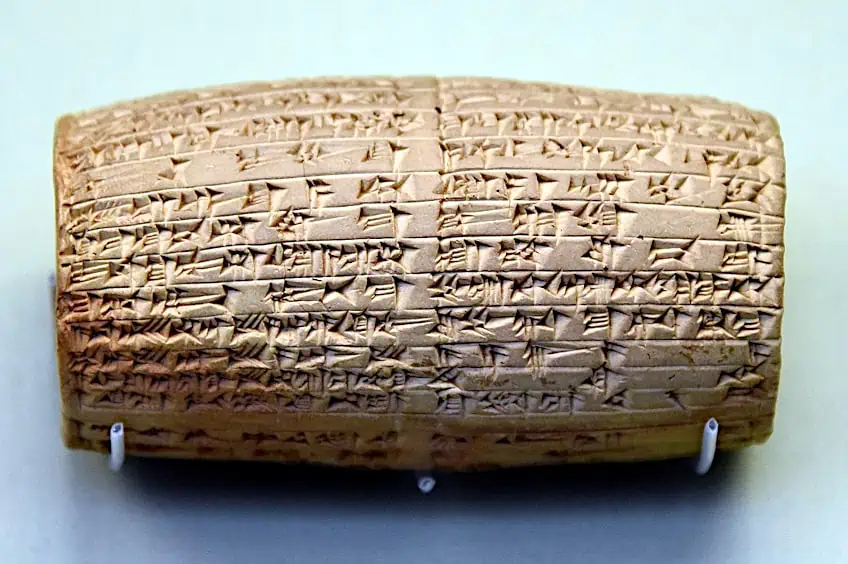
The Reconstructions of the Ziggurat of Ur
However, all ancient structures must eventually fall, and by the 6th century BCE, the Ziggurat of Ur had fallen to ruin. It was then restored during the reign of King Nabonidus. This king was the final ruler of the Neo-Babylonian Empire because he eventually fell to the Achaemenid Empire. The Ziggurat of Ur was, at least, restored under him before that happened, but we know very little about him and his rule other than that. Although, his restoration did stick quite closely to the original and even retained the original design.
The Ziggurat of Ur would, once again, fall to ruin.
The ancient, destroyed site was rediscovered and then, during 1922-1934, it was subject to excavation by Sir Leonard Woolley under the order of the University of Pennsylvania. This excavation would help scholars understand the original layout of this ancient structure.

During the 1980s, that Saddam Hussein ordered the exterior and the staircase to be rebuilt. The original structure can still be seen at the top of that external recreation. It is little more than a ruin now, but part of it does remain. There are only three layers of the original structure still standing though.
It was determined that the first layer is the only layer from the original construction under Ur-Nammu, and the top two layers that still exist are from the Neo-Babylonian restoration. The modern external reconstruction allows one to see how the outer walls of the lowest level and the staircase may have appeared.
The Modern Era of the Ziggurat of Ur
This reconstruction was not meant to remain in pristine condition forever though because when the Gulf War broke out in 1991, Hussein attempted to use the monument as a cover for some of his fighter jets, but the area was bombed anyway. There are still, to this day, four craters from explosives around the Ziggurat of Ur, and the reconstructed exterior is also damaged by over 400 bullet holes.
While Ur is no longer a major location, it was a major capital in Mesopotamia. This means that there is some level of modern tourism to the site, but as there is very little around this old Sumerian ziggurat, the tourism that it does see is considerably muted in comparison to many other ancient sites. It can be visited, but you’ll need to hire a guide to get you through the desert so you can see this ancient building that was once at the center of a grand empire.

Some Facts About the Ziggurat of Ur
- The Ziggurat of Ur was restored twice. It was restored during the Neo-Babylonian era back in the 6th century BCE, but that restoration ultimately fell too. It was later restored under Saddam Hussein in the 1980s.
- Saddam Hussein used the Ziggurat of Ur as a shield. During the Gulf War, Hussein had some military jets parked near the structure as he believed this would stop the coalition forces from bombing the ancient site. He was not entirely correct in that assumption.
- The city of Ur may have been the location of the first law code. This law code, known as the Code of Ur-Nammu, was written in 2100 BCE. This makes it the oldest surviving law code in the world.
- The city of Ur may have been the birthplace of the biblical Abraham. In the Book of Genesis, Abraham, the father of the Abrahamic faiths like Judaism, Christianity, and Islam, was born in a place called Ur Kasdim. It is possible that this is the same city that housed the Ziggurat of Ur, but this is hotly debated by scholars.
- Some of the bricks used in the original construction were extremely heavy. These bricks could have weighed up to 15 kg (or 33 lbs). They may not have been as large as the slabs used in the Egyptian pyramids, but they were still enormous things.
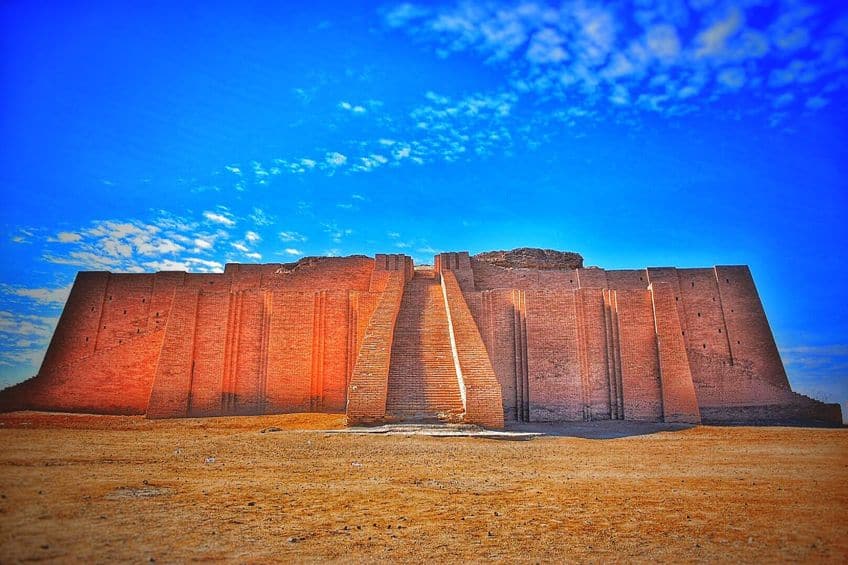
The Ziggurat of Ur was considered a great structure for millennia, but it eventually fell to ruin. Truly ancient structures must be maintained if they have any hope of survival, and after several thousand years of neglect, the Ziggurat of Ur is little more than a ruin today. It may still be a magnificent sight, but it isn’t what it once was, and this article has shown why that is the case.
Frequently Asked Questions
What Are Ziggurat Buildings?
Ziggurats are ancient religious and administrative structures. They can be found throughout modern-day Iraq and Iran, but their exact purposes have been lost to time. Although, they certainly were places that may have contained ancient Mesopotamian gods.
What Were Ziggurats Made Of?
Ziggurats were typically made using a mud core surrounded by sunbaked bricks. These materials needed to be specially arranged to prevent the buildup of water because, as we should all know, water is not great for dried mud.
Who Built the Ziggurat of Ur?
The Ziggurat of Ur was started by King Ur-Nammu, but he died before it was done. His son, Shulgi, completed this ancient Sumerian ziggurat. It was later restored by King Nabonidus, but that restoration eventually fell away, and so it was restored again by Saddam Hussein.
What Is the Ziggurat of Ur?
The Ziggurat of Ur is what remains today of an ancient monolithic Sumerian stepped pyramid surmounted by a temple of the Moon-God Nanna, patron deity of the ancient city of Ur. It served both administrative and religious functions within Ur.
What Is the Connection Between Ziggurats and Pyramids?
The oldest ziggurats predate the pyramids. This also means that the pyramids in Egypt may have been partially inspired by the ziggurats. However, Egyptian pyramids developed from a stepped format to a smooth outer incline, so they may be seen as improvements on the initial ziggurat design.
Justin van Huyssteen is a writer, academic, and educator from Cape Town, South Africa. He holds a master’s degree in Theory of Literature. His primary focus in this field is the analysis of artistic objects through a number of theoretical lenses. His predominant theoretical areas of interest include narratology and critical theory in general, with a particular focus on animal studies. Other than academia, he is a novelist, game reviewer, and freelance writer. Justin’s preferred architectural movements include the more modern and postmodern types of architecture, such as Bauhaus, Art Nouveau, Art Deco, Brutalist, and Futurist varieties like sustainable architecture. Justin is working for artfilemagazine as an author and content writer since 2022. He is responsible for all blog posts about architecture.
Learn more about Justin van Huyssteen and about us.
Cite this Article
Justin, van Huyssteen, “Ziggurat of Ur – Great Stepped Pyramid of the Moon-God Nanna.” artfilemagazine – Your Online Art Source. June 29, 2023. URL: https://artfilemagazine.com/ziggurat-of-ur/
van Huyssteen, J. (2023, 29 June). Ziggurat of Ur – Great Stepped Pyramid of the Moon-God Nanna. artfilemagazine – Your Online Art Source. https://artfilemagazine.com/ziggurat-of-ur/
van Huyssteen, Justin. “Ziggurat of Ur – Great Stepped Pyramid of the Moon-God Nanna.” artfilemagazine – Your Online Art Source, June 29, 2023. https://artfilemagazine.com/ziggurat-of-ur/.


